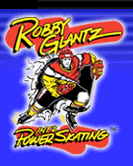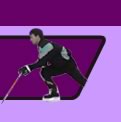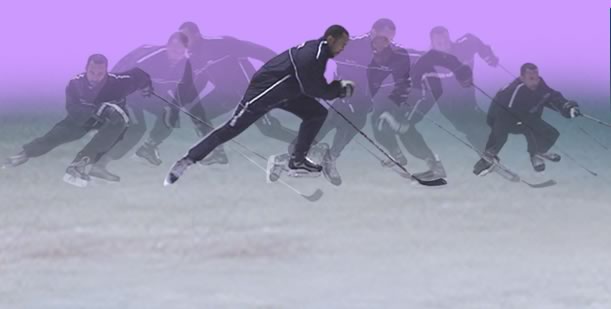The Forward Crossunder
In watching my students perform (from Novice to Pro) the Forward Crossunder maneuver throughout the years, I notice the same inconsistencies over and over (by inconsistencies, I mean mistakes which need to be explored and corrected in order to better a player’s turning ability, balance, confidence and speed).
First of all, it must be understood that, with respect to our body, all of us have a strong side and weak side when it comes to all aspects of skating — therefore, please do not think that you are the only person who ever laced on a pair of skates with such a problem. Of the hundreds of Pros I have coached over the years, including many NHL Stars, I can tell you that everyone of them asks me to work on there weaker side (usually the left side) with them.
Secondly, Crossunders are used to pick up speed, and speed is measured by the distance you travel in a certain unit of time. Therefore, it is not enough to just move your legs faster (i.e. running on the tops or flats of the skate blade) just to make it look like you are going fast. You must learn to move your legs rapidly but with proper techniques for gaining speed. Remember, moving your legs rapidly, does not necessarily mean you are gaining speed, especially if your technique is poor.
And finally, I am certain by now that you have noticed that I am referring to this maneuver as the Crossunder, rather than the traditional Crossover. That is because when performed correctly, the outside foot should not crossover, but, instead, the heel of that skate should cross around and in front of the toe of the inside skate, which is pulling against the ice and in fact, crossing-under. Therefore, I prefer the term Crossunder or even Crossaround.
FORWARD CROSSUNDER TECHNIQUES
Begin by bending the knees deeply, about 2” out over the toe of the skate, with your back straight and chin up. If your knees are too straight, your thighs will hit because you will have no room to crossunder the inside leg.
This is a turning maneuver, therefore, you must land on the edges of the skates, one foot at a time.
The skate on the inside of the circle, must land on an Outside Edge at a 45° angle to the ice (about 1⁄2-way to the ice), while the outside foot is crossing around and in front of it; this outside skate will land on an Inside Edge also at 45°.
Balancing on one foot, on an extreme edge, can of course be difficult...and it is impossible when you land with your bodyweight too much in the front of the blade. Therefore, you must practice landing on edges when turning, with your bodyweight centered towards the middle of the skate blade on both the Inside and Outside Edges (as you come out of the turn, then transfer weight to the front of the blade for an explosive start the other way).
Keep your bodyweight towards the outside leg, inside edge; if it is correct you should feel your outside thigh burning because it is bearing most of the weight.
Do not lean into your turns with your upper body, let the lower body drive into the turn, while your inside shoulder and ear remain level to the ice (or even slightly up to exaggerate it while practicing).
This is a two push maneuver, however, it is performed one foot at a time. The outside skate drives low and hard against the ice on an inside edge, to full extension and returns low to the ice, crossing around and in front of the inside leg (we call this the “stride-push”).
The inside skate then pulls under the outside one while maintaining an extreme outside edge, until it gets to full extension, where it will snap at the toe of the outside edge, it should look like the finish of the letter “y” (we call this the “y-pull”).
Be sure to drive the “y-pull” leg under the body faster and faster to gain speed while turning.





